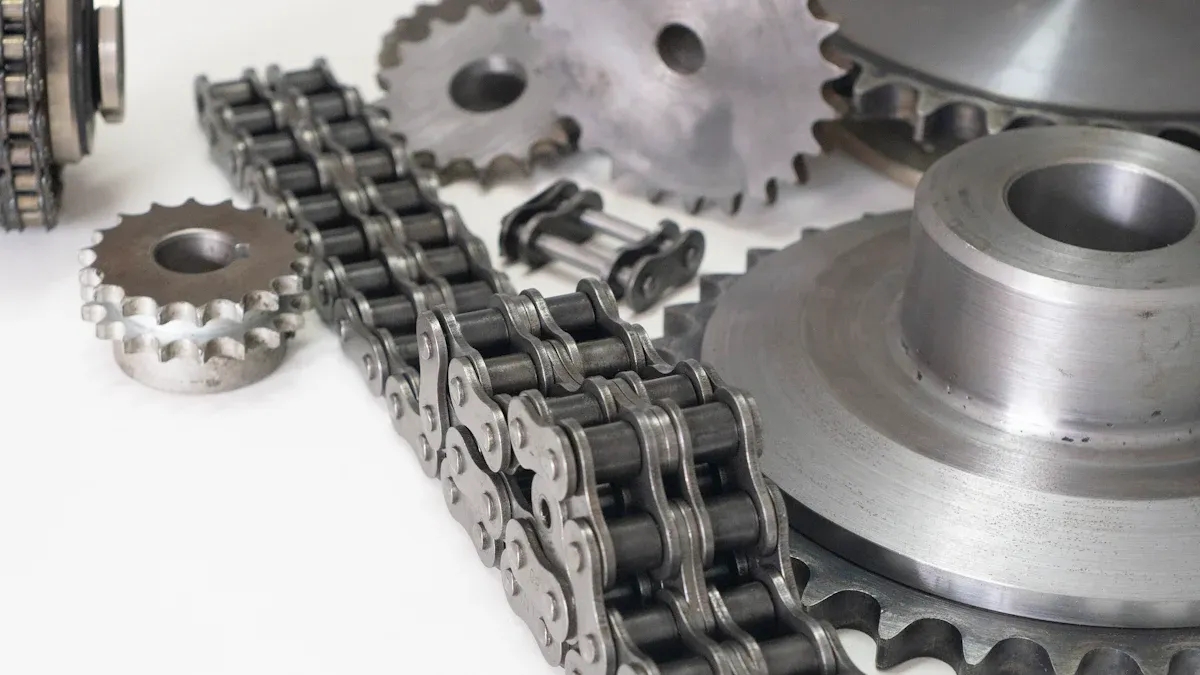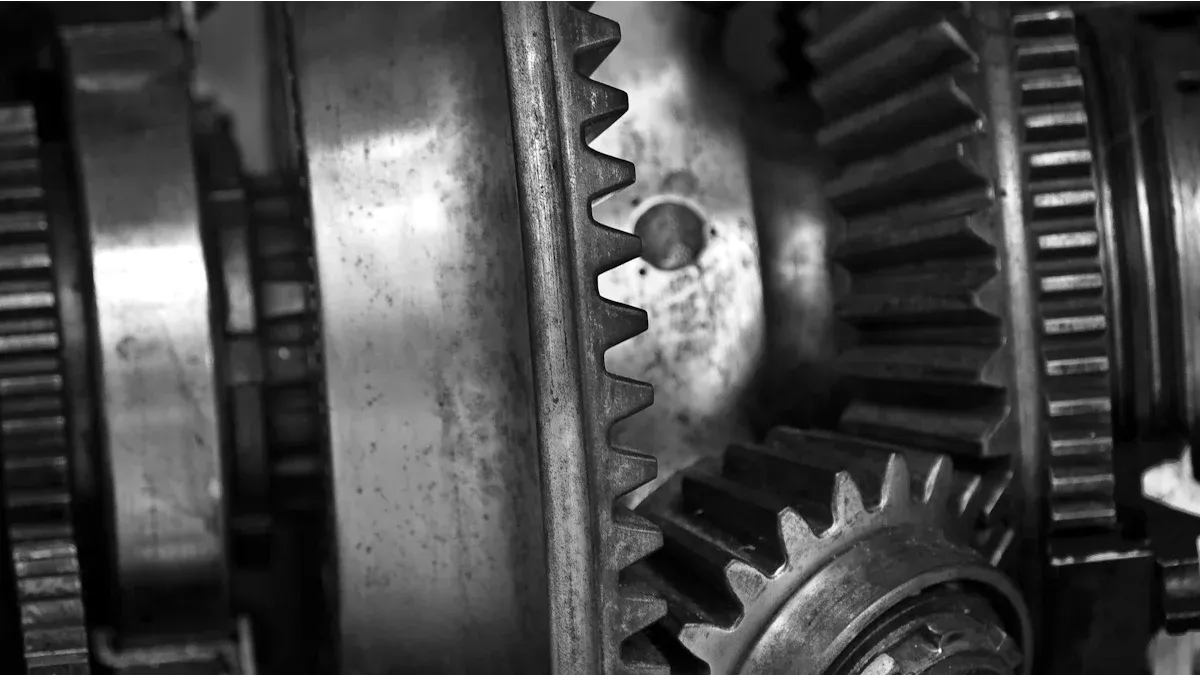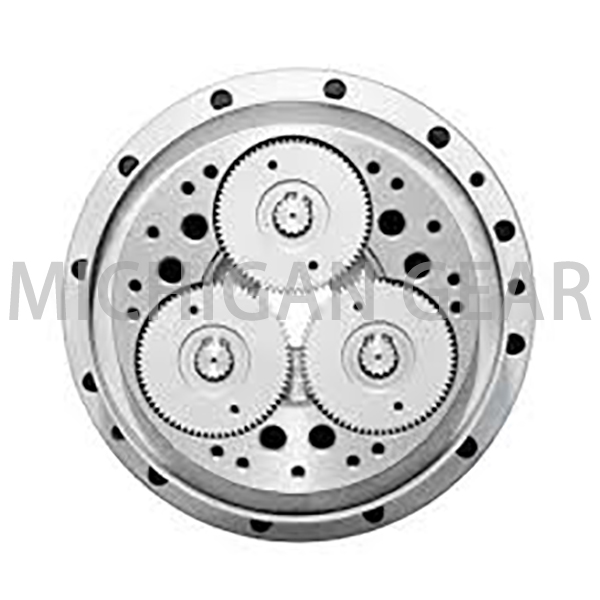A planetary gearbox contains a central sun gear, multiple planet gears, and an outer ring gear. You use this system to adjust torque and speed with high power density in a compact space. The system's efficiency and projected market growth highlight its importance in modern engineering.
| Market Segment | Projected Market Size (2025) | Gearbox Type | Efficiency |
| Industrial Planetary | USD 4.5 billion | Planetary | Over 95% |
| Precision Planetary | USD 2.75 billion | Helical | 98% or higher |
● A planetary gearbox uses a sun gear, planet gears, and a ring gear to change speed and torque. This design is strong and saves space.
● You can get different results like speed reduction or reverse motion by holding one part still. This makes the gearbox very useful.
● Planetary gearboxes offer high power in a small size, last a long time, and fit well into many machines. They are used in robots, electric cars, and wind turbines.

To master any technology, you must first understand its fundamental parts and principles. A planetary gearbox might seem complex, but its design is an elegant solution to power transmission challenges. Let's break down its components, how they work together, and the advantages this system offers.
Core Components Explained
You will find four key components at the heart of every planetary gearbox. Each part plays a distinct role in transmitting power.
● The Sun Gear (Input Gear) This central gear sits at the core of the system. It receives the initial rotational force from the motor. The sun gear's teeth mesh directly with the surrounding planet gears, initiating the power transfer.
● The Planet Gears Multiple smaller gears, typically three or more, revolve around the sun gear like planets in a solar system. These planet gears rotate on their own axes while also orbiting the central sun gear. They simultaneously mesh with the sun gear and the outer ring gear.
● The Ring Gear (Internal Gear) This is a large, stationary or rotating ring with internal teeth that enclose the entire gear set. The planet gears mesh with the inside of the ring gear, completing the gear train.
● The Planet Carrier This component is the structural backbone for the planet gears. The carrier holds the planet gears in place, ensuring they remain perfectly spaced. It connects to the center of each planet gear and rotates with them as they orbit the sun gear. You can see its primary functions are:
Support: It provides a rigid structure for the planet gears.
Torque Transmission: It often serves as the output, delivering the final torque from the system.
Load Distribution: It ensures the load is shared evenly across all planet gears, which prevents overload on any single gear.
A Note on Materials Manufacturers select specific materials to maximize durability and performance. You'll find sun and planet gears often made from high-strength alloys like 34CrNiMo6, while ring gears may use robust steels such as S45C or 42CrMo. For smaller, micro-planetary applications, components can even be made from advanced plastics or powder metallurgy materials.
The Operating Principle
The genius of a planetary gearbox lies in its versatility. You can achieve different outputs—like speed reduction, speed increase, or reverse rotation—by holding one of the three main components stationary. The component you choose to fix determines the gearbox's function.
1.Gear Reduction (Fixed Ring Gear) This is the most common configuration. You fix the ring gear, apply power to the sun gear (input), and take the output from the planet carrier. The planet gears are forced to "walk" around the inside of the stationary ring gear, causing the carrier to rotate at a reduced speed but with significantly higher torque. This setup is ideal for heavy-duty tasks where you need more turning force.
2.Overdrive (Fixed Sun Gear) If you hold the sun gear stationary and use the ring gear as the input, the planet carrier becomes the output. In this mode, the output speed increases. For example, in some systems, one rotation of the ring gear can result in 0.774 rotations of the planet carrier, demonstrating a specific overdrive ratio.
3.Reverse Rotation (Fixed Planet Carrier) To change the direction of rotation, you fix the planet carrier. When you apply power to the sun gear, the planet gears act as idlers, transferring motion directly to the ring gear. This causes the ring gear (output) to rotate in the opposite direction of the sun gear (input).
The relationship between these components is defined by precise mathematical formulas. You can calculate the gear ratio based on which part is fixed.
| Configuration | Gear Ratio (GR) Formula |
| Carrier as Output (Reduction) | GR = 1 + (Rr / Rs) |
| Sun Gear as Output (Overdrive) | GR = 1 / (1 + (Rr / Rs)) |
| Ring Gear as Output (Reverse) | GR = – (Rr / Rs) |
Where Rr is the number of teeth on the ring gear and Rs is the number of teeth on the sun gear.
The unique design of a planetary gear system gives you several distinct advantages over traditional gear systems.
1.High Power Density You get exceptional torque from a very compact and lightweight package. The design distributes the load across multiple planet gears, allowing the system to handle more power than a single-gear-path system of the same size.
| Feature | Planetary Gearbox | Helical Gearbox |
| Torque Density | Extremely High. The clear winner for torque relative to size. | Moderate. Requires a larger package to achieve the same torque. |
2.Superior Durability and Reliability The load-sharing mechanism is a key factor in the system's long life. By dividing high torques across several gear paths, you reduce the stress on individual gear teeth and bearings. This balanced design minimizes wear and tear, leading to high reliability even under demanding conditions.
3.Wide Range of Gear Ratios You can achieve a variety of gear ratios efficiently. A single-stage planetary system typically offers reduction ratios from 3:1 to 10:1. For even higher reductions, you can stack multiple planetary stages together within the same housing.
4.Coaxial Alignment The input shaft (sun gear) and output shaft (planet carrier) are aligned on the same axis. This "in-line" configuration simplifies machine design and makes it easier for you to integrate the gearbox into tight spaces.

Understanding the design of a planetary gearbox is the first step. Now, you can explore where its unique advantages are put to work and how to select the right one for your needs. Its compact power makes it a go-to solution across many advanced industries.
Common Applications
You will find these gear systems in a wide range of demanding applications. Their high torque density and reliability make them essential for modern machinery. Key areas include:
● Robotics and Automation: Industrial robots, like KUKA's KR Iontec, use them for heavy-duty welding and assembly. You also see them in the precise joints of collaborative robots (cobots) and the wheel hubs of automated guided vehicles (AGVs).
● Renewable Energy: Wind turbines rely on them for yaw and pitch control. The gearbox helps turn the entire nacelle to face the wind, maximizing energy capture.
● Electric Vehicles (EVs): In EV drivetrains, they efficiently combine power from multiple electric motors. This setup improves overall energy efficiency during both power delivery and regenerative braking.
● Aerospace: You can find them in critical systems like aircraft landing gear, helicopter rotor drives, and engine transmissions where lightweight strength is non-negotiable.
How to Choose the Right One
Selecting the correct gearbox ensures optimal performance and longevity. You must evaluate several key performance metrics against your application's demands.
A Note on Torque You must calculate the required torque to avoid overloading the system. The output torque is a function of the motor's input torque, the gear ratio, and the gearbox's efficiency. Always account for both continuous and peak loads.
Consider these core specifications when making your choice:
| Metric | What You Need to Know |
| Torque | Match the gearbox's nominal (continuous) and acceleration (peak) torque ratings to your load requirements. |
| Gear Ratio | Select a ratio that achieves your desired output speed and torque multiplication. You can stack stages for higher ratios. |
| Backlash | This is the rotational play in the gears. High-precision tasks like robotics require low backlash (under 3 arcmin). |
Finally, you should also consider the duty cycle (continuous vs. intermittent use) and environmental conditions, as these factors directly impact the gearbox's lifespan and reliability.
You now understand the planetary gearbox is a compact, highly efficient, and durable solution for demanding power transmission tasks. Its unique load-sharing design and coaxial alignment make it essential for modern technology. Future innovations using advanced materials and integrated sensors will continue to advance robotics, EVs, and renewable energy systems.
Why is it called a planetary gearbox?
You call it a planetary gearbox because its design mimics a solar system. The smaller "planet" gears revolve around the central "sun" gear, creating the system's unique power transmission path.
How do you maintain a planetary gearbox?
You maintain the system with two primary actions. Following these steps ensures a long operational life.
● You must use the correct lubricant and check levels regularly.
● You should inspect the unit for unusual noise, vibration, or heat.
What are the main limitations?
You should know that planetary gearboxes can be more complex and costly than other gear types. They may also generate significant heat at very high speeds, requiring careful design consideration.
Post time: Oct-28-2025









